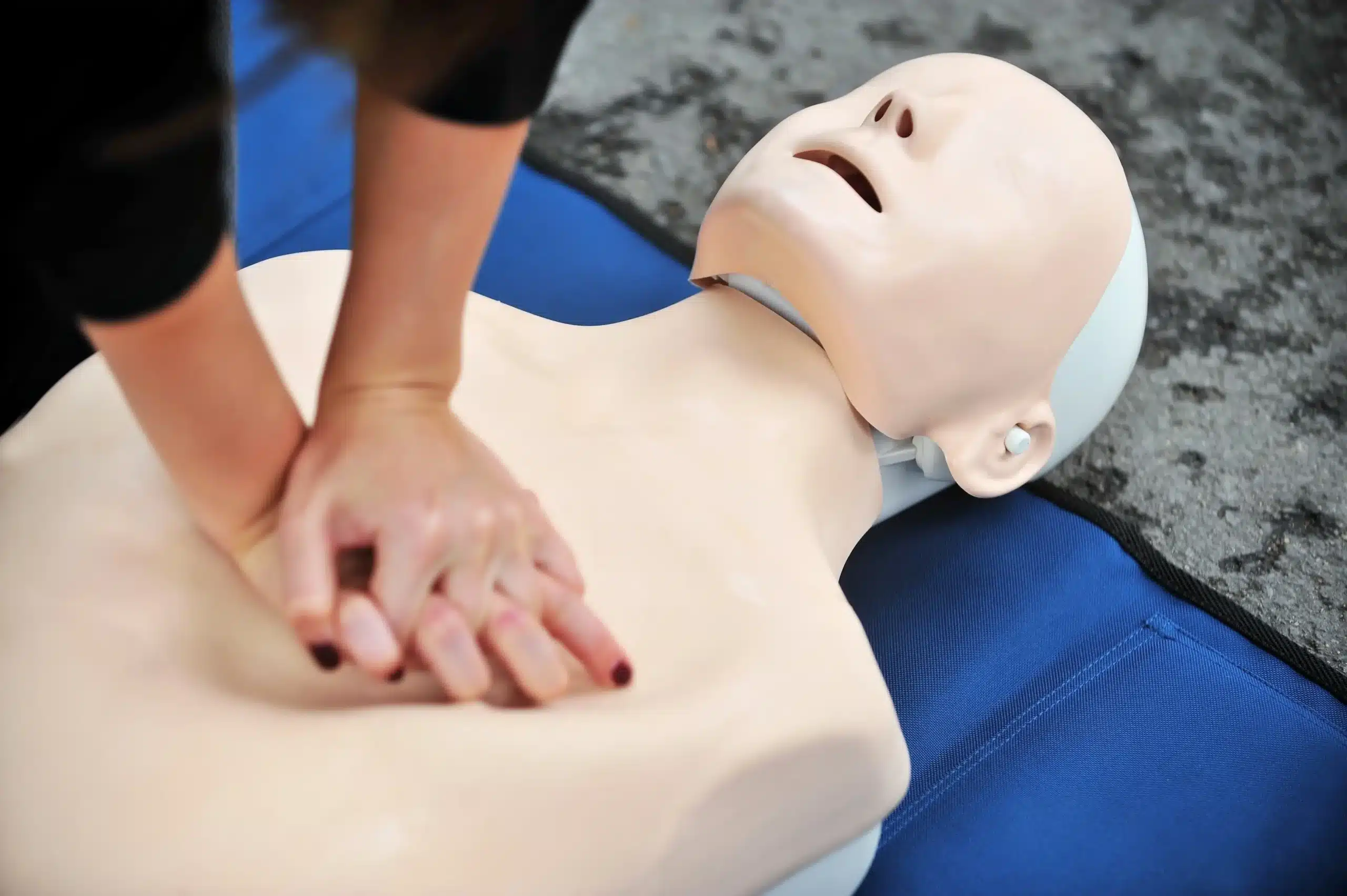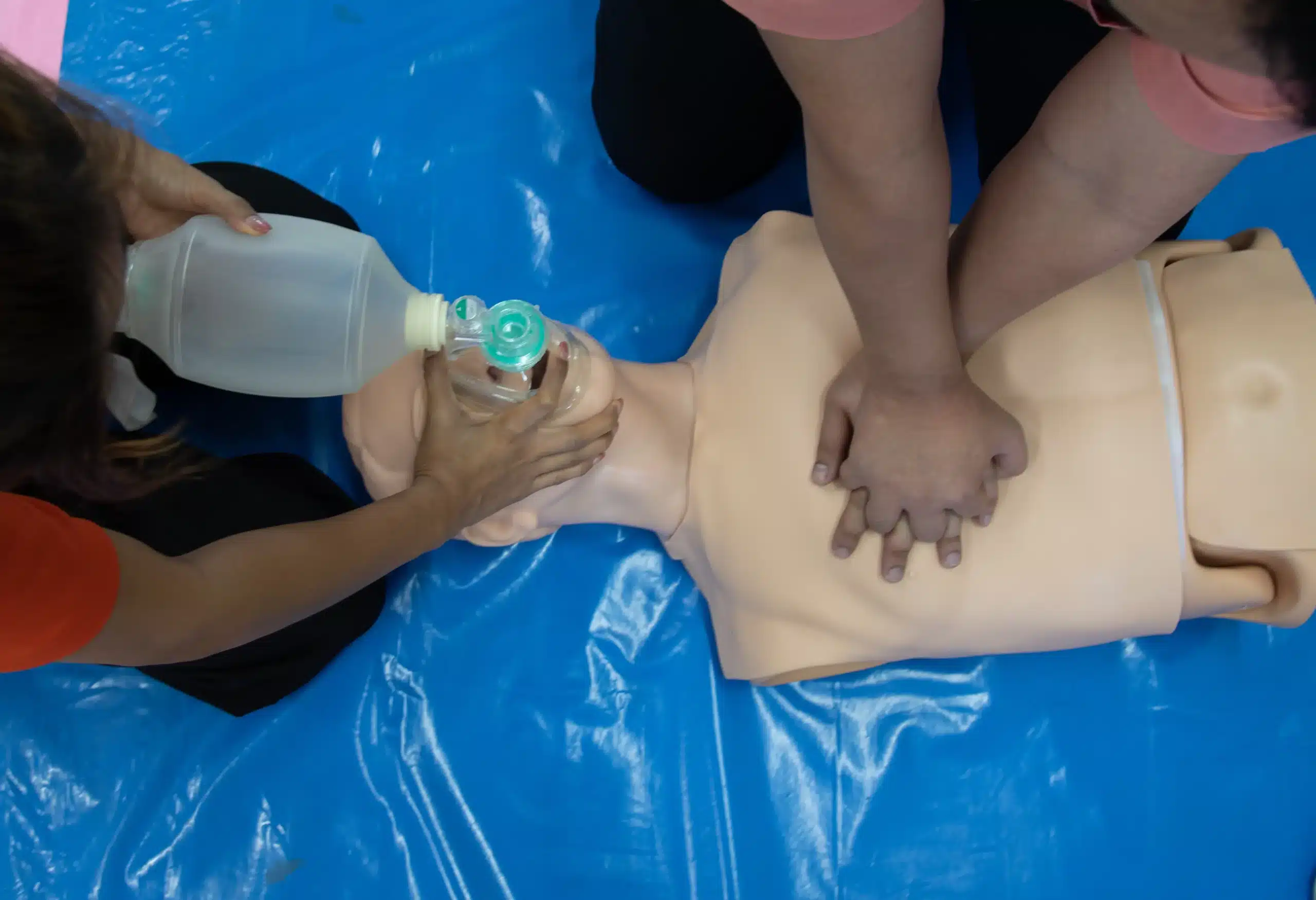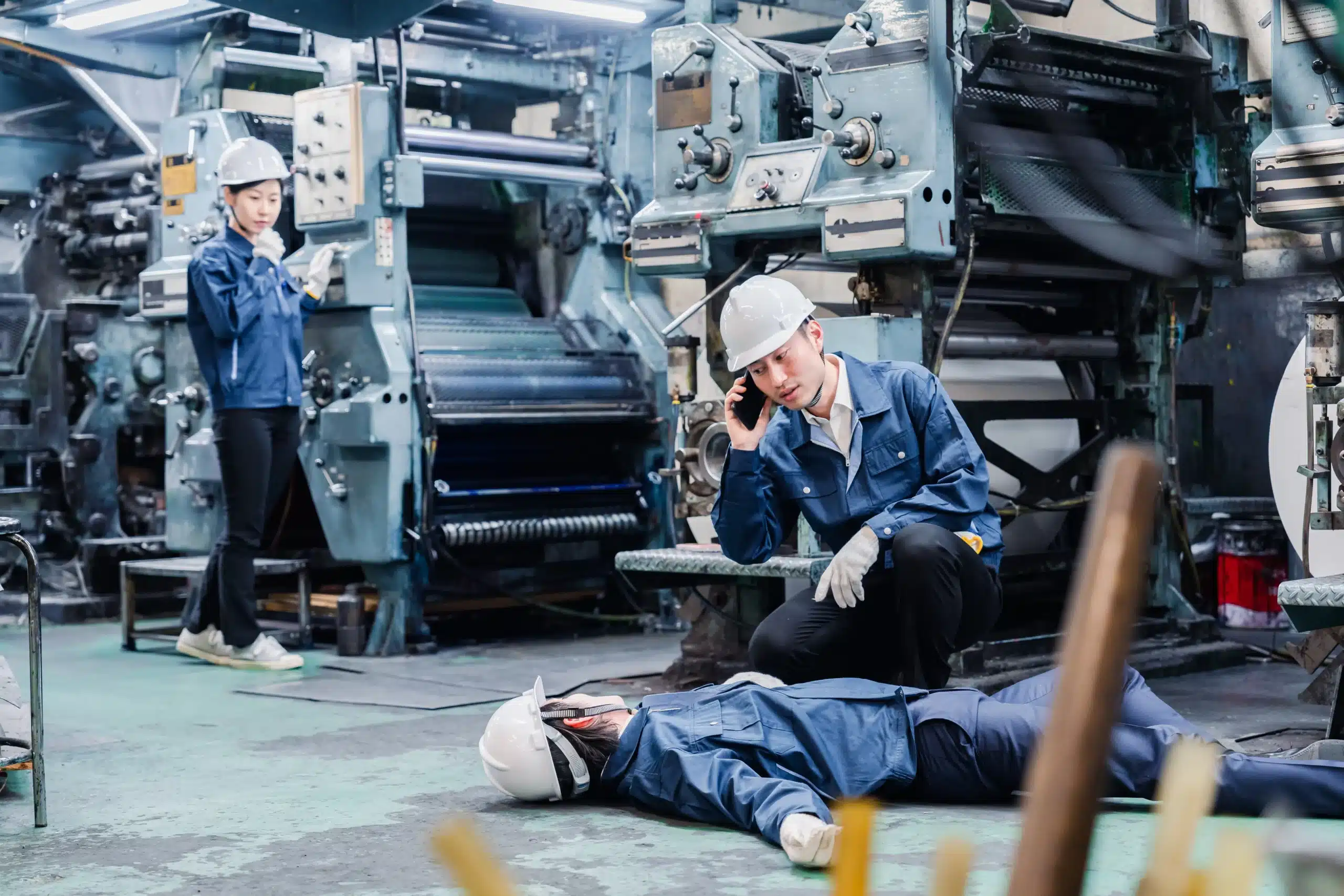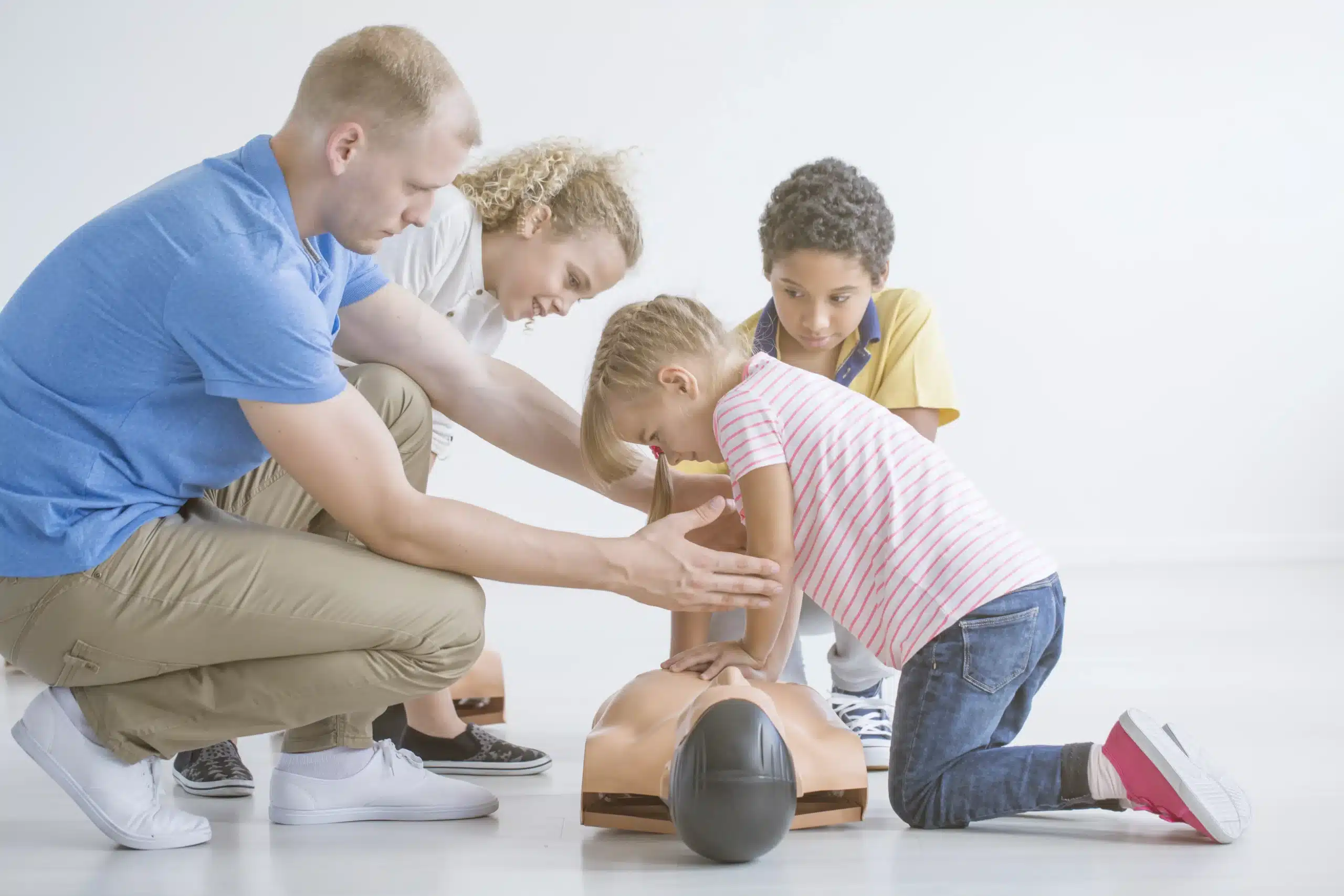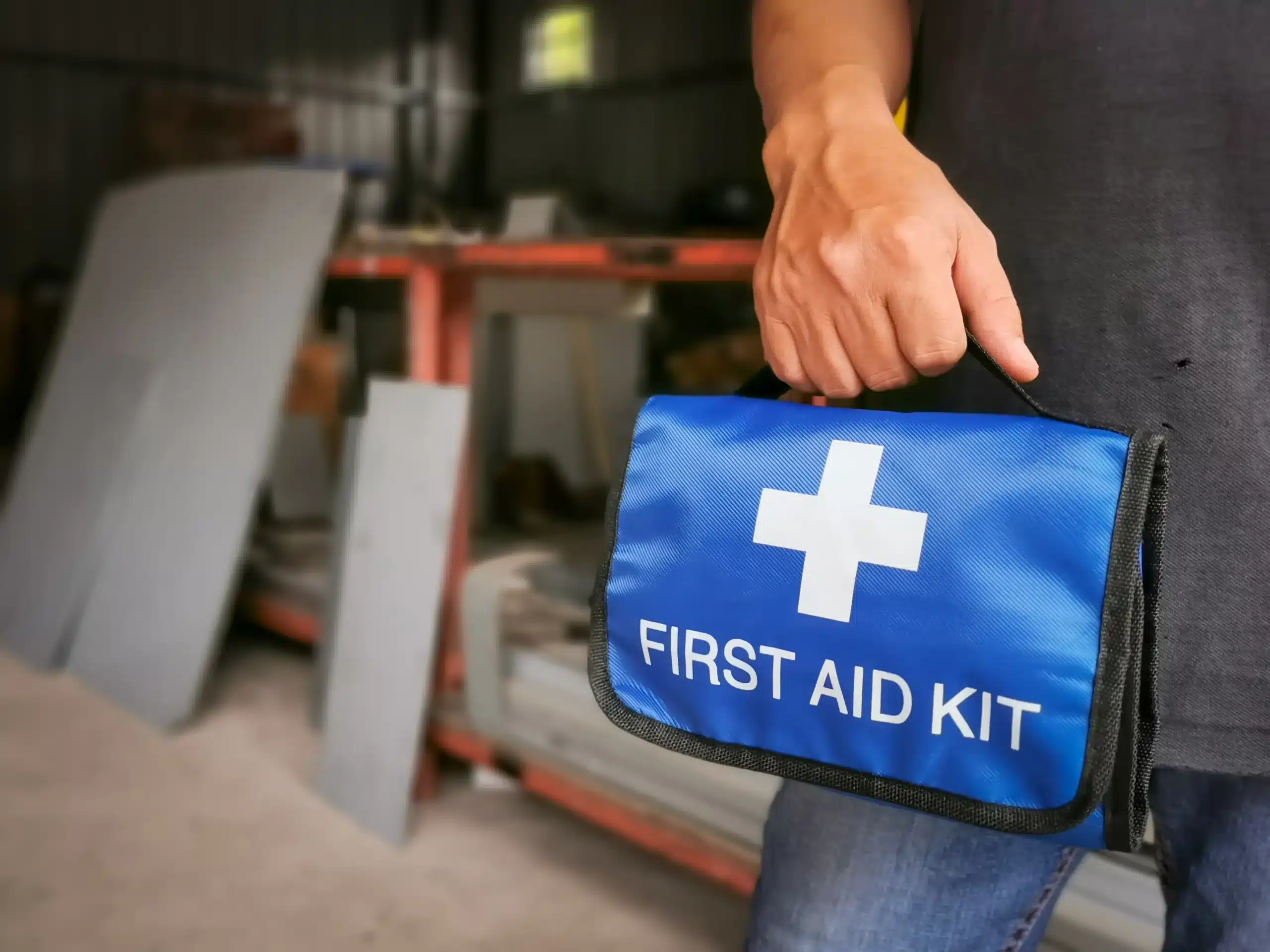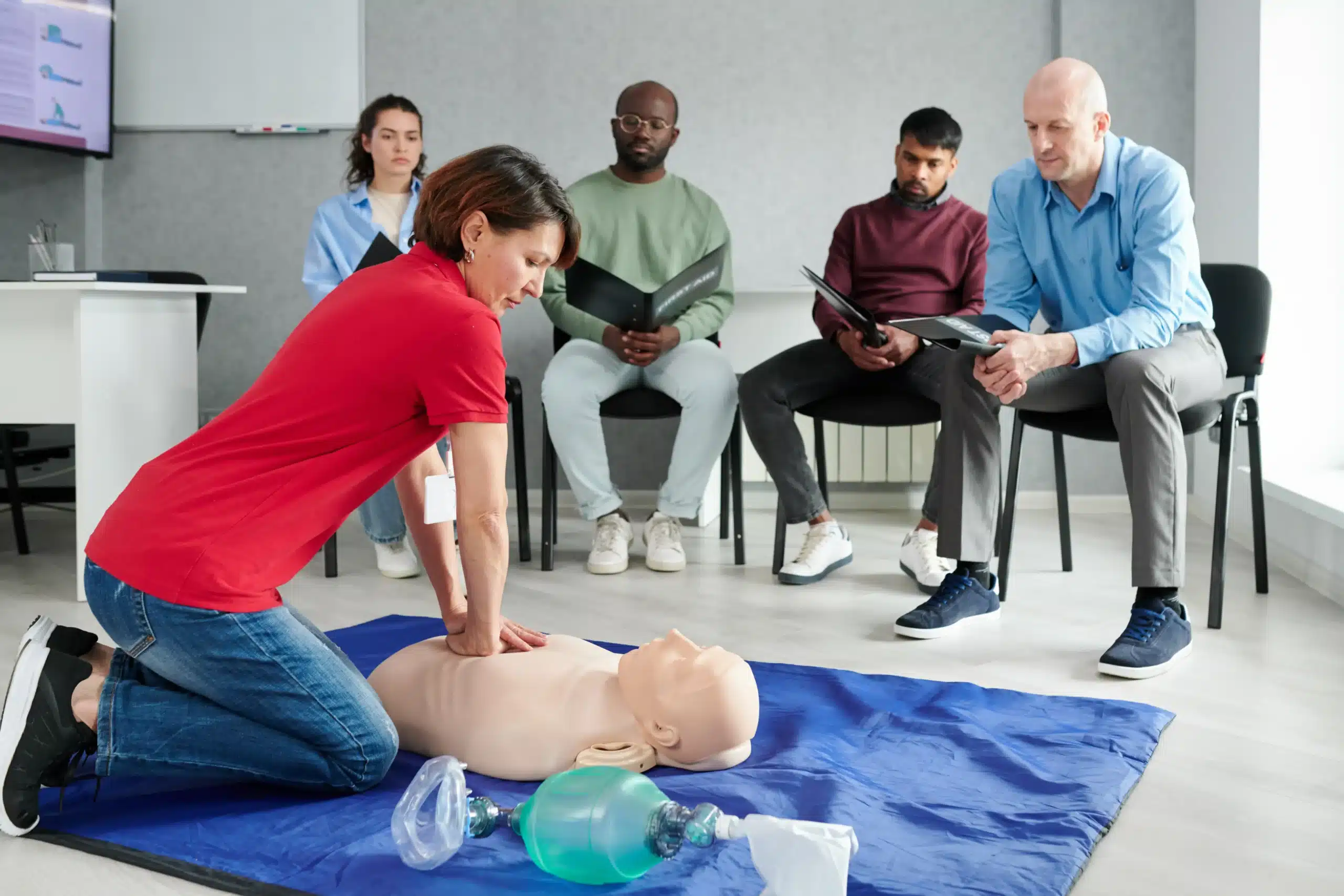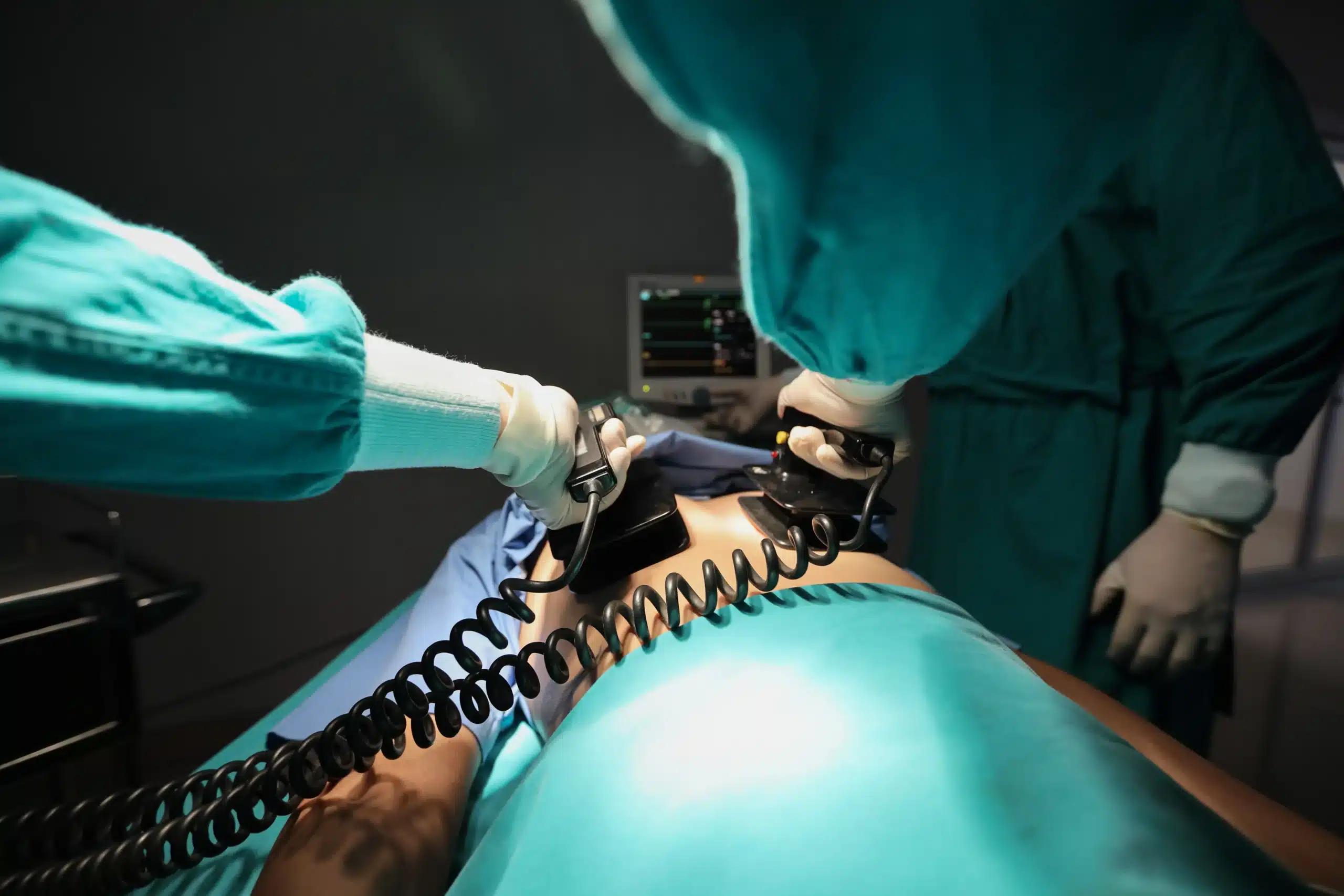In a medical emergency, seconds can matter. Knowing first aid can be the difference between a positive outcome and a tragedy. If you’ve been searching for “first-aid classes near me,” this guide will help you find the right training and develop the skills to respond effectively. We’ll cover everything from basic first aid to CPR and specialized certifications. You’ll also learn how to choose a reputable provider, prepare for your class, and practice your skills to stay sharp. Let’s get you ready to handle emergencies with confidence.
Key Takeaways
- First-aid skills empower you in emergencies: Equipping yourself with practical first-aid knowledge, including CPR and AED training, enables you to confidently handle various medical situations until professional help arrives. Tailor your training to your specific needs and environment.
- Select reputable training for credible certification: Seek certified instructors through recognized organizations like the American Heart Association or the American Red Cross. Consider course formats, schedules, and costs to find the best fit.
- Regular practice keeps skills sharp: Maintain your first-aid proficiency through consistent practice and by staying informed about updated guidelines. Recertify to refresh your knowledge and ensure you’re prepared for any emergency.
What are First-Aid Classes?
First-aid classes teach you how to respond to medical emergencies. From minor injuries to life-threatening situations, these courses equip you with practical skills to provide immediate care until professional help arrives. Whether you’re a parent, a caregiver, or simply want to be prepared, understanding basic first aid can make a real difference.
Basic First Aid
Basic first-aid courses cover essential skills like managing wounds, stopping bleeding, and treating burns. You’ll learn how to recognize and respond to common medical emergencies, including choking, allergic reactions, and sudden illnesses. These classes often include instruction on creating a safe environment and when to call for more advanced medical assistance. Safety Training Seminars offers comprehensive basic first-aid training suitable for everyone.
CPR and AED Training
CPR (Cardiopulmonary Resuscitation) and AED (Automated External Defibrillator) training are vital components of first-aid education. These courses teach you how to perform CPR on adults, children, and infants, and how to use an AED to restore a normal heart rhythm during cardiac arrest. Learning CPR can empower you to save lives in critical situations.
Specialized First-Aid Courses
Specialized first-aid courses cater to specific groups, such as healthcare providers, childcare professionals, or workplace responders. These courses delve into advanced techniques and protocols tailored to the unique needs of each profession. For example, a healthcare provider might take an ACLS course, while someone working in childcare could benefit from additional training on pediatric first aid and CPR. Consider your specific environment and responsibilities when choosing a first-aid course.
Find Reputable First-Aid Classes Near You
Finding the right first-aid class involves a bit of research to ensure you’re getting quality training. Here’s how to find reputable courses:
Search Online
Start by searching online. Websites like the American Red Cross let you search by zip code or city, making it easy to find options near you. Many other training providers also have online search tools, so explore a few different websites to see what’s available in your area.
Check Local Resources
Think local! Community centers, hospitals, and dedicated training businesses often offer first-aid courses. For example, Safety Training Seminars provides a range of American Heart Association (AHA)-certified classes, including CPR, BLS, ACLS, PALS, and First Aid, right here in Sunnyvale. Checking with local resources can help you find convenient, community-focused training.
Verify Provider Credibility
Choosing a program from a recognized provider is key. Look for classes offered by established organizations like the American Heart Association (AHA) or the American Red Cross. These organizations are known for their high-quality training and widely accepted certifications. If you’re unsure about a specific provider, do some research to confirm their credentials and reputation. A little due diligence can give you confidence in the skills you learn.
What to Expect in a First-Aid Class
So, you’ve decided to learn first aid—fantastic! Knowing what to expect can help you feel prepared and confident. Here’s a glimpse into a typical first-aid class:
Course Format and Duration
First-aid classes blend instruction with hands-on practice. Safety Training Seminars offers a range of American Heart Association (AHA) certified classes right here in Sunnyvale, including CPR, BLS, ACLS, PALS, and First Aid. You’ll find options to suit your schedule, including blended learning (online coursework combined with in-person skills sessions). For example, the AHA Heartsaver CPR/AED Blended Learning course pairs online learning with a four-hour, in-person skills session. Group discounts are also available.
Hands-on Practice
First-aid isn’t just about memorizing facts—it’s about developing practical skills. Expect plenty of hands-on practice using training equipment like mannequins and bandages. You’ll learn how to properly assess a situation, perform CPR, control bleeding, and manage other common first-aid scenarios. This practical training builds your confidence and prepares you to respond effectively in a real emergency. After completing your CPR course with Safety Training Seminars, you’ll receive an American Heart Association (AHA) certification card, valid for two years.
Certification
Upon successful completion of your first-aid class, you’ll receive a certification card. This certification demonstrates your competence in basic first-aid principles and techniques. Remember that certifications typically expire, so plan to retake the course to stay up-to-date on the latest guidelines and maintain your skills. Getting your first aid certification is a valuable investment in your ability to help others and respond confidently during emergencies. Safety Training Seminars offers a low-price guarantee for all courses.
How Much Does First-Aid Training Cost?
Knowing the cost of first-aid training helps you budget effectively. Prices depend on several factors, including the course type, location, and training provider. Let’s break down the typical costs and explore ways to save.
Average Prices
Basic first-aid courses generally range from $20 to $60. More comprehensive training that includes CPR certification typically falls between $40 and $80. Here’s a more detailed price breakdown:
- Basic Adult CPR: $20–$55
- Pediatric CPR: $25–$40
- CPR & First Aid combined: $40–$60
- Group Workplace CPR (minimum 8 people): $35–$45 per person
- BLS CPR & AED: Approximately $80, with First Aid an additional $20.
These prices can fluctuate, so it’s always best to check with specific providers in your area. For those in Sunnyvale, Santa Clara, or San Jose, Safety Training Seminars offers competitive pricing on a variety of courses.
Discounts and Financial Aid
Many training centers offer discounts, making first-aid and CPR training more accessible. Group discounts are common and can significantly lower the per-person cost. This is a great option for businesses training their employees. Some organizations may also offer financial aid or scholarships. Be sure to ask about potential cost savings when you contact a provider. For those looking for group discounts or a low-price guarantee, visit the Safety Training Seminars website.
Choose the Right First-Aid Class
So, you’ve decided to take a first-aid class—fantastic! Now, let’s find the perfect course for you.
Assess Your Needs
First, think about why you want first-aid training. Are you a parent wanting to be prepared for childhood emergencies? A teacher looking to keep students safe? Or maybe you work in a field like construction or childcare that requires certification.
Your reason for taking the class will determine the best type of training. For example, healthcare providers often need specialized courses like Basic Life Support (BLS), Advanced Cardiovascular Life Support (ACLS), or Pediatric Advanced Life Support (PALS). Others may find a general first-aid and CPR course perfectly suits their needs. Safety Training Seminars offers a range of American Heart Association (AHA) certified classes, so you can find one that aligns with your goals. We also offer the RQI program for healthcare professionals needing to renew their certifications.
Compare Courses
Once you know what type of training you need, it’s time to compare courses. Think about your schedule and budget. Look for classes offered on evenings or weekends if you have a busy weekday schedule. Safety Training Seminars offers affordable options, and many providers have discounts for group registrations. Check out our low price guarantee.
Also, consider the course format. Some classes are entirely in-person, while others offer a blended learning approach with online modules and shorter in-person skills sessions. This flexibility can be helpful for those juggling work, family, and other commitments. For example, the AHA Heartsaver CPR/AED Blended Learning course combines online learning with a shorter in-person skills practice.
Prepare for Your First-Aid Class
Getting ready for a first-aid class involves a little preparation—both mental and physical. Thinking ahead about what to bring and how to study can make a big difference in how much you get out of the experience.
What to Bring
First things first, minimize distractions. While online first-aid courses offer flexibility, carving out a quiet study space at home is key. This will help you focus and absorb the material effectively. Bring a notebook and pen to jot down important notes and any questions you may have for your instructor. Having a dedicated notebook also makes it easier to review key concepts later. Comfortable clothing and closed-toe shoes are a must for in-person classes, especially for any hands-on practice.
Study Tips
Create a realistic study schedule that works for you. Even a basic first-aid course covers a lot of information, so break down the material into smaller, manageable chunks. Simple CPR suggests blocking out dedicated study time, just as you would for an important meeting. Don’t try to cram everything in at once. Focus on any areas where you feel less confident. CPR Certification Now recommends not just memorizing answers, but truly understanding the concepts. Practicing with a friend or family member can solidify your skills and give you valuable feedback. Remember, the goal is to be able to apply your knowledge in a real-life emergency.
Benefits of Local First-Aid Training
Learning first aid is valuable, but local training offers unique advantages. It connects you with your community and prepares you for emergencies specific to your area.
Community Connection
First-aid training creates a sense of community. You learn alongside neighbors and colleagues, building a network of people equipped to respond to emergencies. These classes can be a great way to meet people and strengthen local bonds. Safety Training Seminars emphasizes this by offering a range of CPR and first-aid courses suitable for everyone from teachers and coaches to parents—anyone interested in gaining these skills. Plus, with their commitment to affordable training, high-quality instruction is accessible to everyone in Sunnyvale.
Local Emergency Protocols
Local first-aid training often incorporates region-specific information, like local emergency contacts and procedures. This is especially helpful in areas with unique challenges, such as specific natural disaster risks or variations in emergency response times. Understanding these local nuances can make a significant difference in the effectiveness of your response during a real emergency. If you’re in Sunnyvale, exploring the different types of first-aid training available locally is a smart move. Getting your first-aid certification in Sunnyvale ensures you’re well-prepared for emergencies specific to your community.
First-Aid Class Providers in Sunnyvale, CA
Finding the right first-aid class is easier than you think. Several organizations and providers offer comprehensive training in Sunnyvale and the surrounding areas. Here are a few options to explore:
Safety Training Seminars
Safety Training Seminars offers a range of American Heart Association (AHA) certified classes, including CPR, BLS, ACLS, PALS, and First Aid, right here in Sunnyvale. They also offer on-site training for businesses and groups. Visit their website to view the course schedule and register for a class that fits your needs. They’re known for their low price guarantee in Santa Clara County.
American Red Cross
While the American Red Cross doesn’t have a training center in Sunnyvale, they partner with local organizations to offer first-aid and CPR courses. Check the Red Cross website to find classes near you. Many organizations, including Safety Training Seminars, offer group discounts on Red Cross-certified courses.
American Heart Association
The American Heart Association certifies training centers like Safety Training Seminars to deliver their curriculum. This ensures a standardized, high-quality learning experience. Look for AHA-certified courses in your area if you prefer their curriculum. Safety Training Seminars offers a variety of AHA-certified courses, including CPR, Basic Life Support (BLS), Advanced Cardiovascular Life Support (ACLS), and Pediatric Advanced Life Support (PALS). You can find more information on their BLS and ACLS courses on their website.
Local Hospitals and Community Centers
Local hospitals and community centers often host first-aid and CPR training. These can be a convenient option. Check with organizations like El Camino Health and the Sunnyvale Community Center for upcoming courses. For in-home training, consider providers like In Home CPR, which brings certified instructors directly to you.
Use Your First-Aid Skills
Learning first aid is an ongoing process. It’s not enough to simply take a class and get certified—you need to maintain and improve your skills to be truly prepared for emergencies. This involves regular practice and staying up-to-date with the latest guidelines.
Practice Regularly
Think of first aid like any other skill—the more you practice, the better you become. Regular practice helps you build muscle memory and react quickly and efficiently in a stressful situation. Find opportunities to review the material you learned in your first-aid course. Practice with friends or family, walking through different scenarios and techniques. Their feedback can help you identify areas for improvement and boost your confidence. Even simple things like quizzing yourself on first-aid procedures or watching refresher videos can make a difference.
Stay Updated
First aid guidelines and best practices change. Staying current with these changes ensures you’re providing the most effective care. Your first-aid certification is typically valid for two years. Make sure you recertify before it expires to refresh your knowledge and learn the latest techniques. Look for continuing education opportunities or refresher courses to stay sharp. This commitment to ongoing learning can significantly impact your ability to handle emergencies effectively. Consider subscribing to reputable first-aid organizations or journals for updates and new recommendations.
Related Articles
- First Aid Certification Sunnyvale: Your Complete Guide – Sunnyvale CPR Classes
- First-Aid Training in Sunnyvale: Your Guide – Sunnyvale CPR Classes
Frequently Asked Questions
How do I choose the right first-aid class for me? Consider your specific needs and what you hope to gain from the training. If you’re a parent, a basic first-aid and CPR course might be sufficient. Healthcare professionals often require more specialized training like BLS, ACLS, or PALS. Think about your schedule and budget, too. Look for courses offered at convenient times and explore options like blended learning, which combines online modules with shorter in-person skills sessions.
What can I expect during a typical first-aid class? Expect a mix of instruction and hands-on practice. You’ll learn essential skills like wound care, bleeding control, and how to respond to common medical emergencies. Most classes include CPR and AED training. Hands-on practice with mannequins and other training equipment helps you develop the muscle memory needed to respond effectively in real-life situations.
Where can I find reputable first-aid training providers? Start by searching online. Organizations like the American Red Cross and the American Heart Association have websites that allow you to search for certified training centers near you. Also, check local resources like community centers, hospitals, and dedicated training businesses. When choosing a provider, verify their credentials and look for certifications from recognized organizations.
How much does first-aid training typically cost? Costs vary depending on the course type, location, and provider. Basic first-aid courses can range from $20 to $60, while more comprehensive courses that include CPR and AED training typically cost between $40 and $80. Many providers offer discounts for groups, so be sure to ask about potential cost savings.
How can I make the most of my first-aid training? Practice regularly to maintain your skills and build confidence. Review the material you learned in class, practice with friends or family, and consider taking refresher courses. Stay up-to-date with the latest first-aid guidelines and recommendations, as these can change over time. Recertification is typically required every two years, providing a good opportunity to refresh your knowledge.
